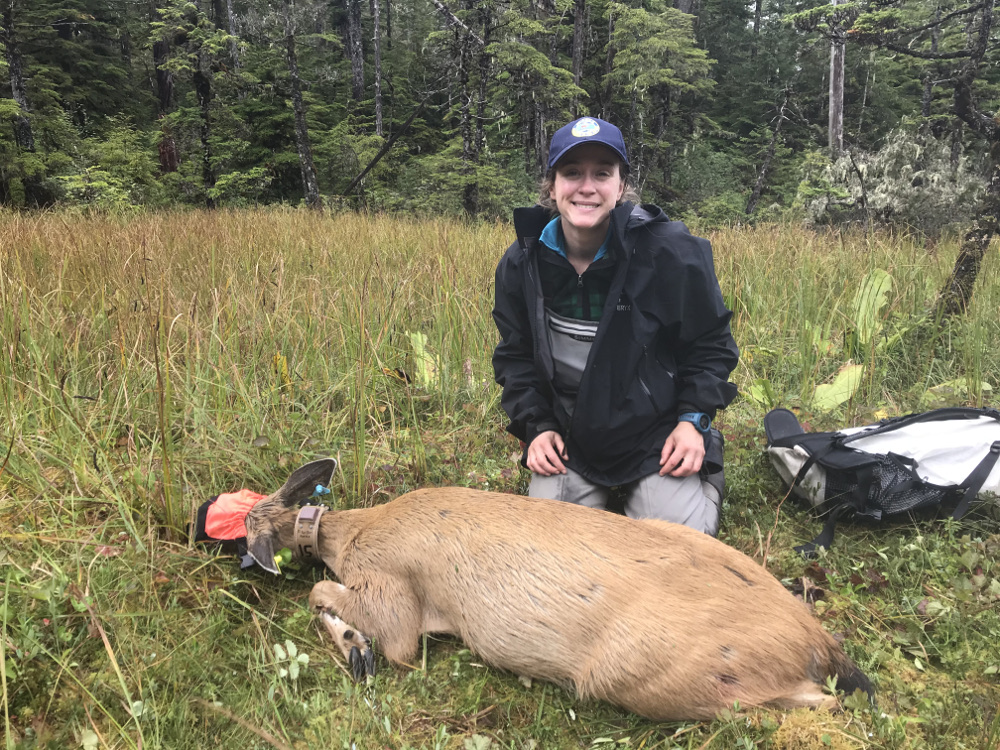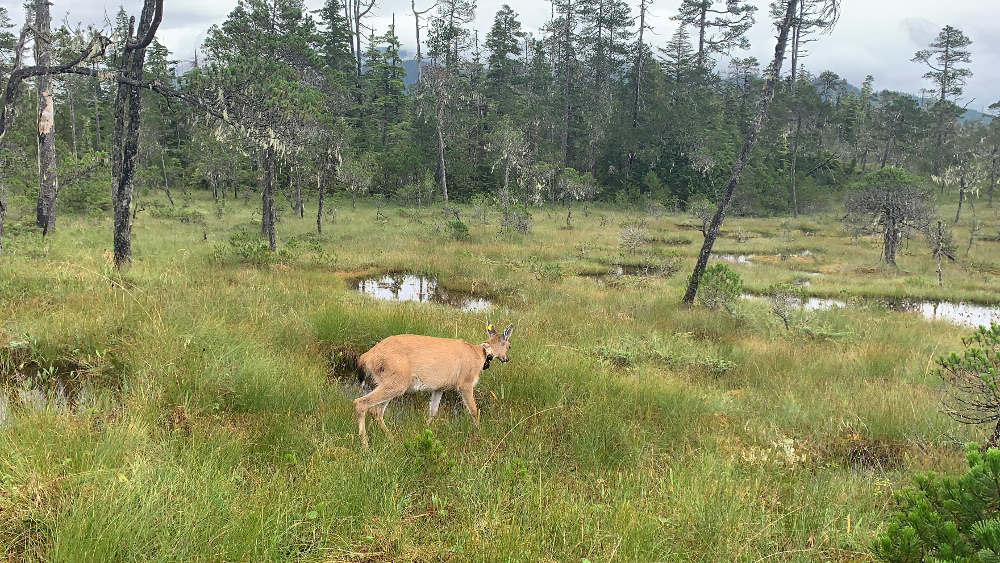
Some 18 Mitkof Island deer have been fitted with GPS collars this summer as part of a multi-year population study by state scientists.
The tracking devices will give information about the type of forest land the Sitka black tail deer prefer and the extent of their movement over the next two years.
Biologists with the Alaska Department of Fish and Game used tranquilizer darts and a net gun to capture and sedate 18 does on the island’s road system in August. They were fitted with collars and ear tags.
“There’s collars sort of around Ohmer Creek area and the campground area,” said Dan Eacker, the department’s deer biologist for the region. “We’ve got some around the gun range and that one by Papke’s Landing and then there’s a few out Frederick Point Road, three to four collars there. So yeah, it’s possible that you’ll see a collared deer. I’m hoping that they’ll head out into the woods in the wintertime and not stay in somebody’s yard all winter. But I’m hoping they’ll retreat into the forest and we’ll get some good information on winter habitat use that way.”
Past research efforts on Mitkof have used less reliable VHF transmitters which require tracking with a radio receiver. These GPS collars send more precise location information every other day through a satellite signal. It’s hoped that data will help inform the department’s study on population levels. Eacker has been using DNA from deer droppings as well as game camera photos to develop an estimate of Sitka black tails. He also says the location data can add to other research done elsewhere in the region.
“So we’ll really have strong inference into their habitat selection on the island and data can also be combined with these two other GPS data studies that occurred on Prince of Wales Island and Chichagof Island for a regional habitat selection study which should be pretty informative for forest management and those type of things,” he said.
The tracking devices will show deer movement through logged and un-logged parts of the forest and reliance on places that receive less snow during the winter.
Eacker hopes to collar two more does sometime later this year. Scientists use a tranquilizer drug that is reversed after the animal is fitted with a tracking device. The deer also receive supplemental oxygen during the fitting and the biologists monitor their vital signs. There’s been one deer with the collar reportedly rubbing a bare patch on its neck. Eacker thinks the first device they attached in the Papke’s Landing area may have been too loose.
“Yeah that sometimes happens,” Eacker said. “We try to avoid that and if you see excess neck rubbing on any to the collars we sure would appreciate knowing about it. We’ve tried to be vigilant in getting them fit as close as possible. With that first deer we were working in the dark on the side of the road and it was kind of the first one we got out there and I think the collar might have got out with too much room.”
The tracking devices are programmed to drop off September 1st of 2022 and can be recovered then or if the animal dies before that.










